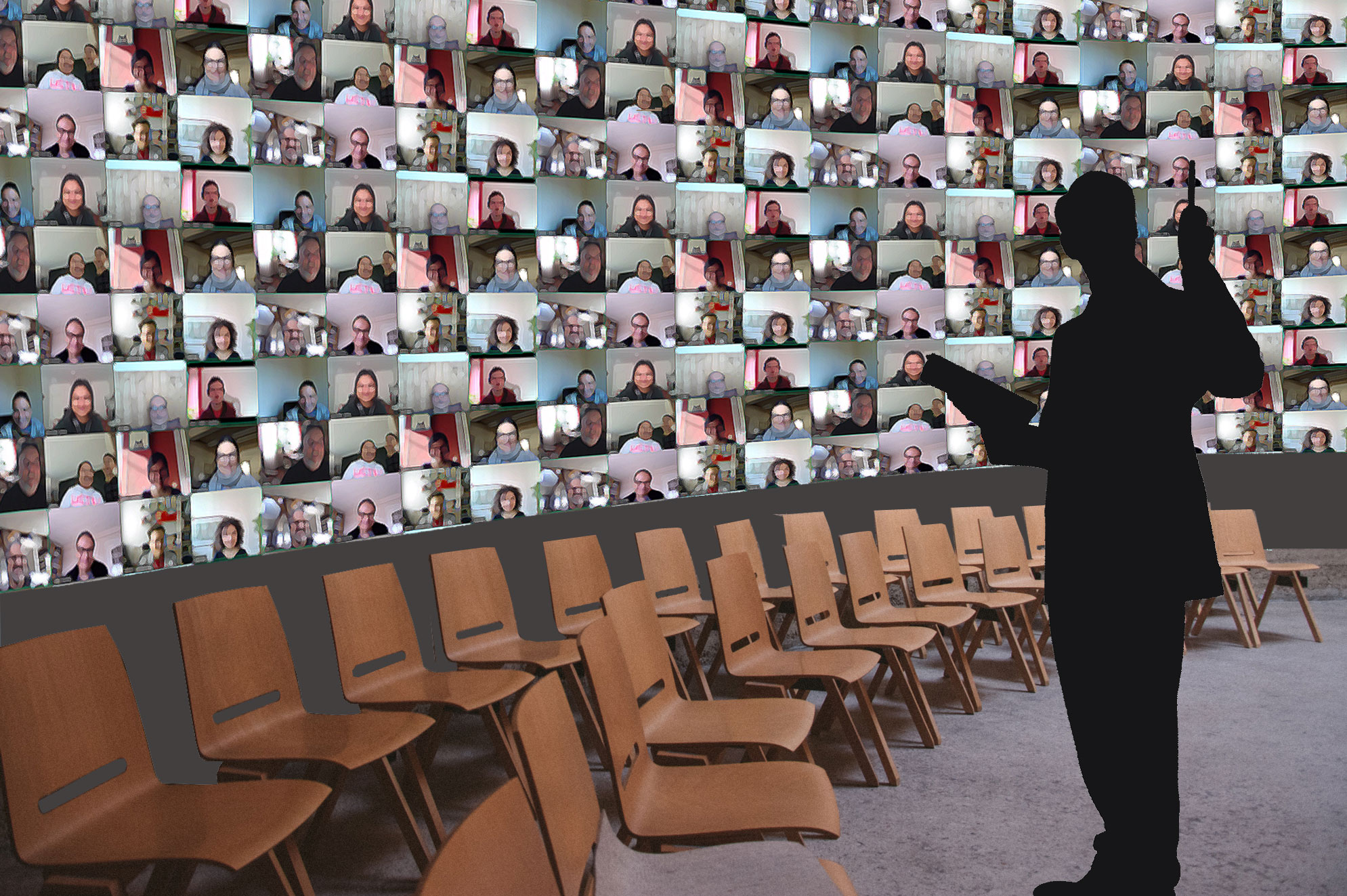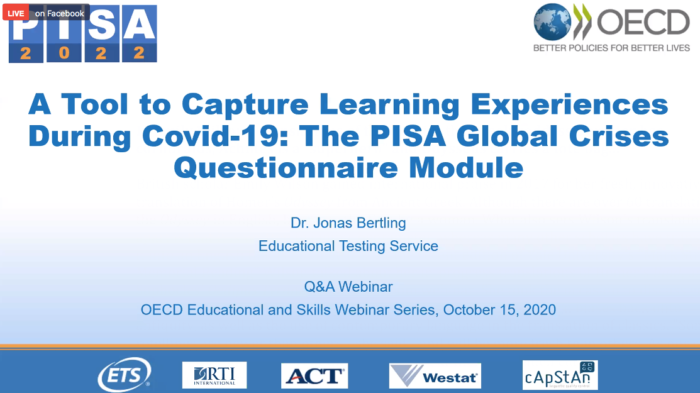
How to create an inclusive and engaged virtual classroom in the COVID-19 era
by Pisana Ferrari – cApStAn Ambassador to the Global Village
The COVID-19 pandemic has caused widespread disruption to schooling and it seems that it will be there for an undetermined period of time, at least pending availability of a vaccine. In the mean time online distance learning has become the “new normal” for many, posing a number of challenges, for educators and students alike. “It’s hard to connect with students”, says Amie Bentley, an American 20-year veteran art teacher. “You’re on one side of the screen. They’re on the other. Even worse are the distractions! One kid’s parent is walking around half dressed. Someone’s got Peppa Pig blaring. And, a million little un-muted squares are vying for attention. How is any teacher supposed to engage students in a meaningful way?” So much for teachers… At the other end, students have their own set of issues: not attending physical classes and the consequent lack of interaction with others can lead to a sense of isolation and loss of purpose. Online environments do, indeed, present unique challenges, and it is essential for educators to find ways, just as in physical classroom spaces, to make this experience welcoming, engaging and inclusive. According to The Chronicle of Higher Education, a major news service in US academic affairs, “Teaching inclusively means embracing student diversity in all forms — ethnicity, gender, disability, socioeconomic background, ideology, even personality traits like introversion — as an asset.” Is this feasible in online learning?
Key challenges
The future of schooling is a major concern for governments, international organisations, educators, students, and families worldwide, as they seek to find ways to adapt to the new COVID-19 reality. Today, in a webinar, the OECD’s Andreas Schleicher, Director for Education and Skills, presented the “PISA Global Crises Module” which comprises of 62 student questionnaire items and 68 school questionnaire items. The module aims to better understand the different effects of the current crisis on student learning and well-being, and the degree of interruption or changes to education across different systems. The OECD hopes it will be a useful tool for governments and researchers. As an aside, we are proud that cApStAn was in charge of the linguistic component of this module. Based on Schleicher’s observations, and those of other educators, we have put together a list of six issues which we find particularly significant.
A for Access
Access to technology is the key factor for any inclusiveness to be achieved. Historically, starting with its earliest forms in the 18th century (correspondance courses), distance learning offered unique educational opportunities for those who were not among the higher classes, who could not afford full-time residence at an educational institution or who lived in remote geographical areas (see our recent article on its history). Distance education has evolved over time from snail mail to phonograph, radio and telephone, through to TV and internet. Distance learning as we know it today is online and relies heavily on technology. The huge digital divide across countries, and even within countries, poses a huge challenge in terms of educational equity. As Schleicher said today, “access is the basic assumption, and it is not being fulfilled”.
B for Belonging
The capacity to create a sense of belonging and community is another challenging aspect of online learning. Lack of in-person interaction makes this more problematic; teachers and students need to learn new skills. Harvard Business School’s Dr. Alexandra Sedlovskaya shared her views on this topic with Harvard Business Review editor Amy Bernstein in a recent webinar. Creating an inclusive classroom starts even before the first day of class, she says. Teachers must set the stage early, reach out to students by email and welcome them to courses, possibly by sending personalised notes (as she does). As in any well-functioning community, classrooms, whether in person, online, or hybrid, common norms need to be in place. Then, teachers have to be creative in finding ways for students to get to know each other, for teachers to get to know them, and for all to feel part of a community of shared interests. It is essential for students to feel that their concerns, needs, and preferences for online learning are taken into account.
C for Computer literacy
The computer literacy of students is another key issue. According to educators at the Center for Teaching Innovation, Cornell University, the idea that students are “digital natives” does not mean they are prepared for online learning; they may need support. Data about computer literacy from international large-scale assessements is quite telling in this respect. The IEA’s recent International Computer and Information Literacy Study (ICILS) was designed to address the question of how well students were prepared for study, work, and life in a digital world. It involved 46,000 grade 8 students and 26,000 teachers from 200 schools, in 14 countries, across Europe, Asia and North America. Results revealed that 18% failed to reach even the lowest level of the computer and information literacy (CIL) scale, and 25% scored the lowest level (cApStAn was asked to verify the translations — with a view to maximizing comparability across language versions — of the ICILS data collection instruments). Technical skills have represented a steep learning curve for teachers as well, says Schleicher.
D for Disabilities
When speaking of inclusiveness students with special needs immediately come to mind. For many students, e.g. those with physical disabilities or particular medical needs, online learning can be a plus and can offer unique opportunites. They can learn from the confort of their own home, avoid travel to school, etc. But for students whose hearing or sight are impaired things are very different. When COVID-19 lockdowns were first enforced most schools were not prepared for moving classes online, and it will take time to adjust courses around their specific needs. Providing lesson scripts and captioning visual materials can support those with hearing impediments, and communication needs for low vision/blind students may be partly accommodated via electronic Braille displays, used to read electronic documents (if they are created in accessible formats). Hopefully, with improvements in technology, special needs students will have more options.
E for Engagement
Dr. Alexandra Sedlovskaya’s “four Cs framework” — Curiosity, Candor, Courtesy and Courage — was designed to build trust with her students, help shape “a safe space” for discussions and foster engagement. Her four Cs are about encouraging students to pursue their curiosity and offer their diverse perspectives openly, in a way that is kind and respectful of others, without fear of being contradicted or judged. This may benefit introverts or students who are less prone to voice their views and, at the other end, discourage overbearing students, for the benefit of all. There are technical aspects to take into consideration: students may not all be visible on the screen at once, and teachers need to be just as thoughtful about how they call on online students as they do with students in physical classrooms, says Dr. Sedlovskaya. Hybrid classrooms, in which some students are present physically in the classroom and others are joining remotely, introduces another dimension of diversity to which teachers also need to pay particular attention. Finally, it is important to set strict norms about using mobile phones and texting during classs, and in general to address any other ways in which students can be distracted from lessons.
F for Flexibility
Online education needs to be flexible so that all students have different options in the way to access course materials. The Columbia University Center for Teaching and Learning suggests, for example, sharing PDFs instead of videos, which require more bandwidth; offering synchronous and asynchronous elements to ensure that all students, regardless of the time zone, can engage with the course materials, with other students, and with teachers; recording lectures and Zoom meetings so that they can be viewed any time; offering transcripts, and providing captions. For instance, they say, YouTube provides auto captioning. The captions can be edited for accuracy and made available to learners. It is also important during live sessions to verbally describe visuals (images, diagrams, or charts) for students who have difficulty seeing them.
Conclusions
It is difficult to tell how the post-COVID-19 situation will evolve. It is likely that hybrid, part face-to-face, part online, models of education will become more common with the gradual return to normality. Distance (online) education has the potential reach out to the entire world and offer educational opportunities for students who might not otherwise have them. But there cannot really be any talk of inclusiveness without access to reliable internet and devices with which to make use of it. It is not just about the technology either. As the OECD states in its June 2020 publication “Education at a Glance” the COVID-19 crisis “has exposed the many inadequacies and inequities in our education systems, from access to the broadband and computers needed for online education, and the supportive environments needed to focus on learning, up to the misalignment between resources and needs.”

The OECD’s “PISA Global Crises Module” will no doubt provide interesting insights into the effects of the current crisis on student learning and well-being, and to what the future of online learning might look like. The findings will be integrated into PISA, Schleicher said — PISA is the OECD’s Programme for the International Assessment of Students, for which cApStAn has been collaborating since its inception in 2000.
Sources
“A Tool to Capture Learning Experiences During Covi-19: The PISA Global Crises Questionnaire Module”, Q&A webinar, October 15, 2020
“Making Zoom Sessions Inclusive”, Cornell University Center for Teaching Innovation, Fall 2020
“Inclusive Teaching and Learning Online”, Columbia University Center for Teaching and Learning
“What Do Safe, Respectful and Inclusive Virtual Classrooms Look Like?”, ADL Education
“Distance Learning for Proficient Communicators”, National Center on Deaf-Blindness, April 2020
Photo credit: Graphic elaboration by Graphillus/Milan on a photo by Daniil Kuzelev @ Unsplash